
Abruzzo National Park: Italy's Untamed Wilderness
Discover the untamed beauty and rich cultural heritage of Abruzzo National Park, a sanctuary for wildlife and adventure seekers in the heart of Italy.
Abruzzo National Park is a haven for nature lovers and adventure seekers. Located in the heart of Italy, this park offers a unique blend of rugged mountains, dense forests, and clear lakes. The park is home to a diverse range of wildlife, including the Marsican brown bear, Apennine wolf, and golden eagle. Visitors can enjoy a variety of outdoor activities such as hiking, skiing, and bird watching. The park is dotted with charming villages that have preserved their ancient traditions and architecture. These villages offer a glimpse into the local culture and provide a perfect escape from the hustle and bustle of city life. You can explore historical sites, sample local cuisine, and even stay in traditional stone houses. With its stunning landscapes and rich biodiversity, Abruzzo National Park is a must-visit for anyone looking to experience the natural beauty and cultural heritage of Italy. Whether you're an avid hiker or simply looking for a peaceful retreat, this park has something for everyone.
Local tips in Abruzzo National Park
- Visit in the spring or fall for the best weather and fewer crowds.
- Bring sturdy hiking boots for the rugged terrain.
- Stay in one of the local villages to experience traditional Italian culture.
- Look out for the park's unique wildlife, but keep a safe distance.
- Try the local cuisine, especially the mountain cheese and lamb dishes.
Abruzzo National Park: Italy's Untamed Wilderness
Abruzzo National Park is a haven for nature lovers and adventure seekers. Located in the heart of Italy, this park offers a unique blend of rugged mountains, dense forests, and clear lakes. The park is home to a diverse range of wildlife, including the Marsican brown bear, Apennine wolf, and golden eagle. Visitors can enjoy a variety of outdoor activities such as hiking, skiing, and bird watching. The park is dotted with charming villages that have preserved their ancient traditions and architecture. These villages offer a glimpse into the local culture and provide a perfect escape from the hustle and bustle of city life. You can explore historical sites, sample local cuisine, and even stay in traditional stone houses. With its stunning landscapes and rich biodiversity, Abruzzo National Park is a must-visit for anyone looking to experience the natural beauty and cultural heritage of Italy. Whether you're an avid hiker or simply looking for a peaceful retreat, this park has something for everyone.
When is the best time to go to Abruzzo National Park?
Iconic landmarks you can’t miss
Parco Nazionale del Gran Sasso e Monti della Laga
Explore the stunning landscapes and rich biodiversity of Gran Sasso and Monti della Laga National Park, a paradise for outdoor enthusiasts and nature lovers.

National Park of Abruzzo
Discover the breathtaking beauty and diverse wildlife of the National Park of Abruzzo, Italy's natural sanctuary for outdoor adventures.
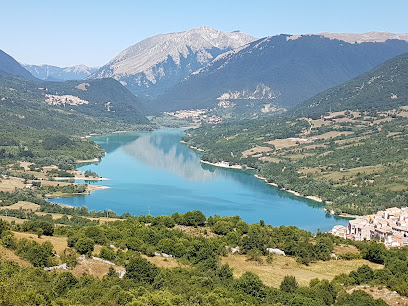
Rocca Calascio
Discover the breathtaking beauty and rich history of Rocca Calascio, a medieval castle offering stunning views and adventure in the heart of Abruzzo.
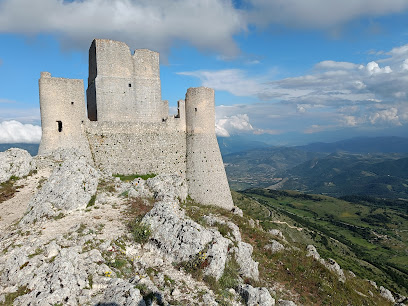
Riserva naturale guidata Punta Aderci
Explore the stunning Riserva Naturale Guidata Punta Aderci, a wildlife refuge and beach paradise on the picturesque Adriatic coast of Italy.

Stiffe Caves
Explore the breathtaking Stiffe Caves, an underground marvel in Abruzzo, Italy, filled with stunning formations and rich geological history.
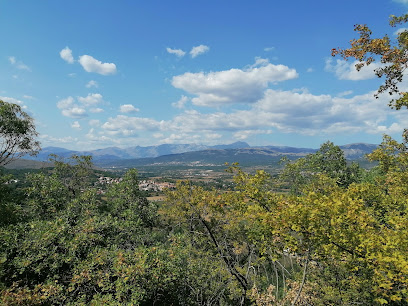
The Natural Reserve Camosciara
Discover the Natural Reserve Camosciara: a hidden gem in Italy's Abruzzo National Park, perfect for hiking, wildlife spotting, and experiencing nature's tranquility.
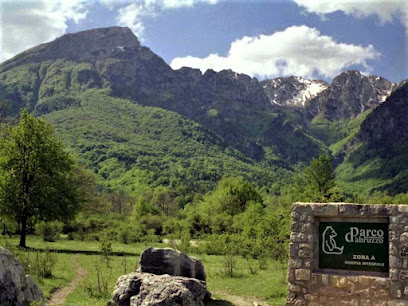
Valle dell'Orfento
Experience the natural beauty of Valle dell'Orfento, a stunning national park in Abruzzo, Italy, perfect for hiking and wildlife encounters.
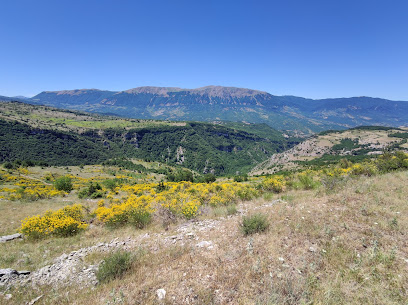
Nature Reserve Pineta Dannunziana
Explore the tranquil beauty of Nature Reserve Pineta Dannunziana, a wildlife refuge in Pescara, Italy, perfect for nature lovers and scenic strolls.

Visitor Center Daini
Explore the breathtaking wildlife park of Visitor Center Daini in Abruzzo, Italy, and connect with nature's wonders in a serene setting.
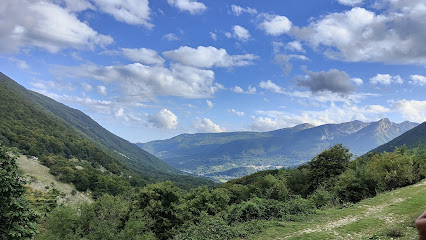
Parco Naturale Majella
Explore the breathtaking landscapes and diverse wildlife of Parco Naturale Majella, a premier destination for outdoor adventure in Italy.
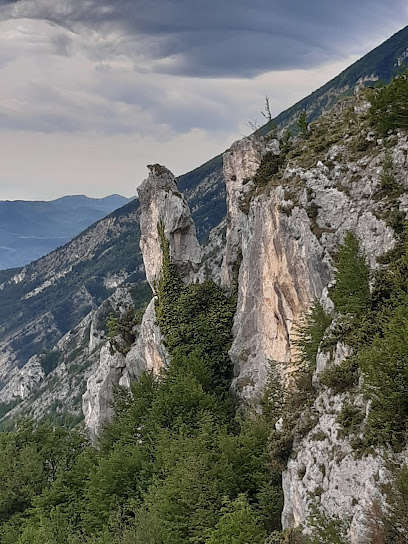
Parco Nazionale della Maiella
Explore the breathtaking Parco Nazionale della Maiella, a haven for nature lovers and adventure seekers in the heart of Italy's Abruzzo region.
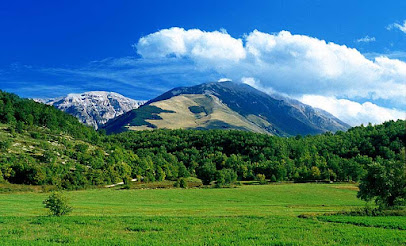
National Museum of Abruzzo - MUNDA
Uncover the rich cultural heritage of Abruzzo at the National Museum of Abruzzo - MUNDA, a treasure trove of art and history in L'Aquila.

Ente Parco Nazionale del Gran Sasso and Monti Della Laga
Explore the breathtaking beauty of Gran Sasso and Monti Della Laga National Park, a haven for outdoor enthusiasts and nature lovers in Italy's captivating Abruzzo region.
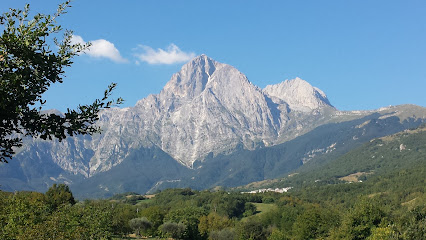
Ente Autonomo Parco Nazionale D'Abruzzo
Discover the stunning landscapes and rich biodiversity of Ente Autonomo Parco Nazionale D'Abruzzo, a nature lover's paradise in Italy.
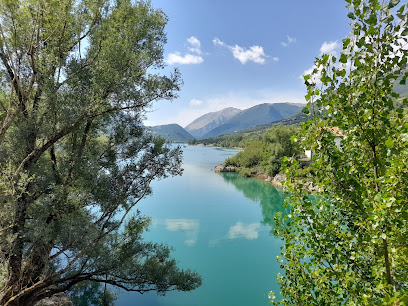
Unmissable attractions to see
Parco Nazionale del Gran Sasso e Monti della Laga
Explore the breathtaking beauty of Gran Sasso e Monti della Laga National Park, a haven for nature lovers and outdoor enthusiasts in Italy.

Riserva naturale guidata Punta Aderci
Discover the breathtaking landscapes and rich biodiversity of Riserva Naturale Guidata Punta Aderci, a natural haven along the Abruzzo coast.
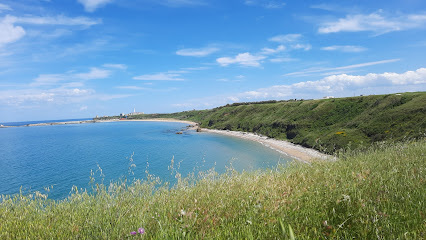
Stiffe Caves
Discover the stunning beauty of Stiffe Caves in L'Aquila, Italy, a natural wonder filled with enchanting limestone formations and serene underground rivers.
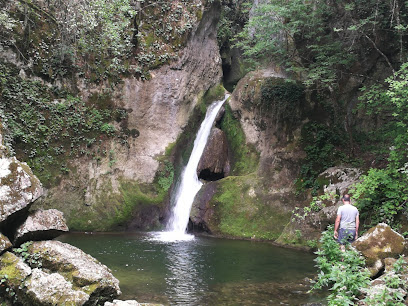
The Natural Reserve Camosciara
Discover the breathtaking landscapes and rich biodiversity of The Natural Reserve Camosciara, a haven for nature lovers and adventure seekers in Italy.
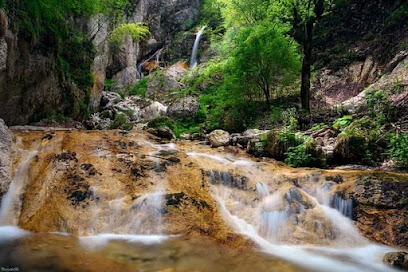
Valle dell'Orfento
Explore Valle dell'Orfento, a breathtaking national park in Italy, perfect for hiking, wildlife watching, and experiencing nature's untouched beauty.

Area faunistica del Lupo
Explore the Area faunistica del Lupo, a stunning wildlife park in Civitella Alfedena, dedicated to the majestic wolves of Italy, perfect for nature lovers.
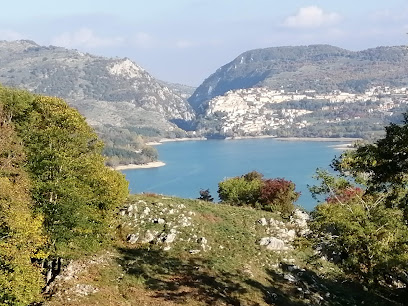
Visitor Center Daini
Discover the vibrant wildlife and serene landscapes at Visitor Center Daini, a premier wildlife park in Sant'Angelo, Italy, perfect for nature lovers.
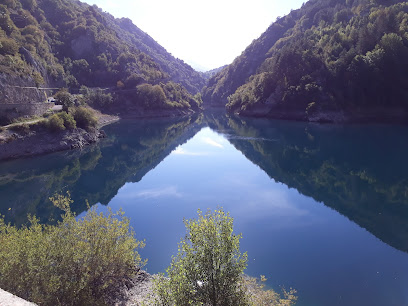
Val Fondillo
Discover Val Fondillo, an enchanting nature preserve in Abruzzo, Italy, perfect for hiking, wildlife watching, and experiencing stunning natural beauty.
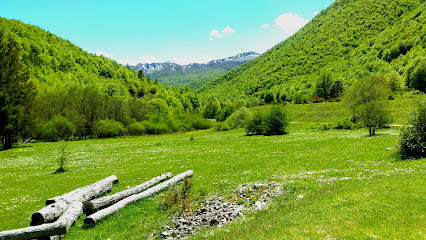
Parco Naturale Majella
Experience the thrill of adventure and wildlife in the breathtaking landscapes of Parco Naturale Majella, a perfect family destination in Italy.
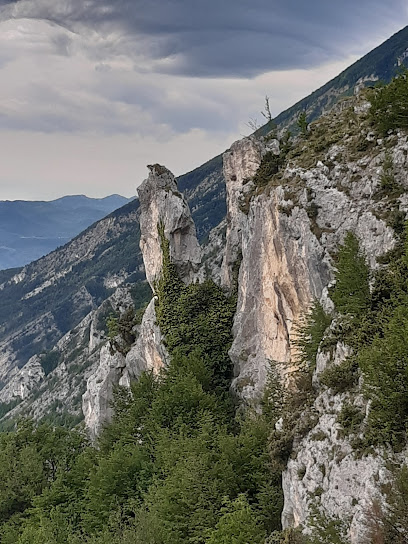
Impianti Sci Pescasseroli
Experience the thrill of skiing in the stunning Abruzzo mountains at Impianti Sci Pescasseroli, an unforgettable winter destination in Italy.
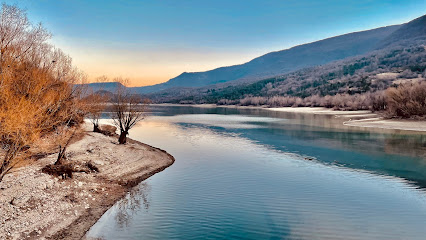
Sentiero del Cuore
Explore the breathtaking Sentiero del Cuore in Scanno, a stunning hiking area offering picturesque views and a serene escape into nature.

SNOW TUBING PESCASSEROLI
Experience the thrill of snow tubing in Pescasseroli, a winter wonderland in the heart of Italy's Apennines, perfect for family fun and adventure.
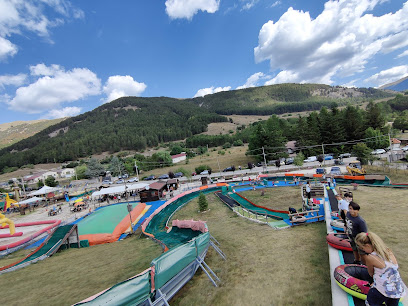
Castello Monumentale
Discover the enchanting Castello Monumentale in Barrea, Italy, where history meets breathtaking landscapes and cultural richness.
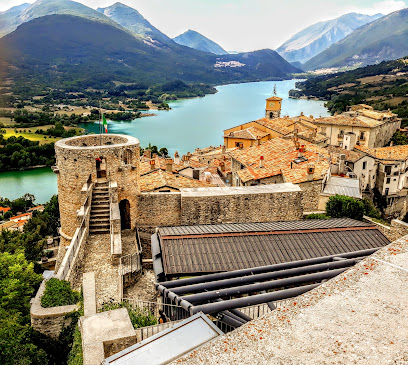
Cascata delle Ninfe
Experience the breathtaking beauty of Cascata delle Ninfe, a stunning waterfall in the heart of L'Aquila, perfect for nature lovers and adventurers.
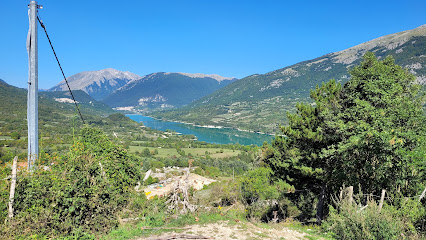
Parco Nazionale della Maiella
Explore the breathtaking landscapes and rich biodiversity of Parco Nazionale della Maiella, a hidden gem in Italy's stunning Abruzzo region.
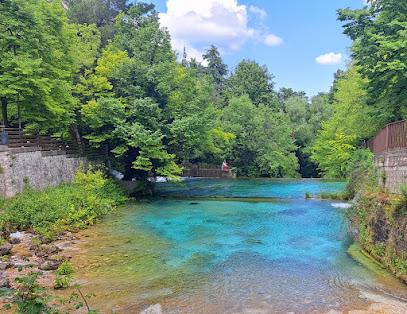
Essential places to dine
Trabocco Punta Cavalluccio
Experience exquisite seafood dining at Trabocco Punta Cavalluccio with stunning Adriatic views.
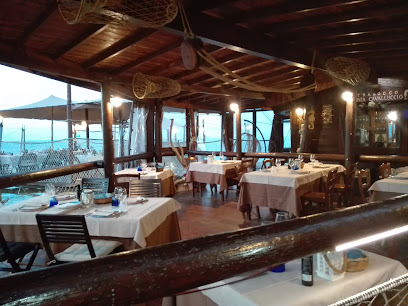
Ristoro Mucciante
Experience authentic Abruzzese cuisine at Ristoro Mucciante, where quality meats and local flavors come together in a charming setting.
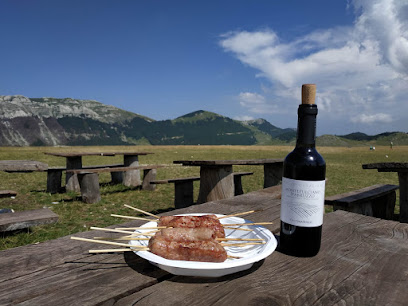
Ristorante “IL PICCHIO”
Experience authentic Italian flavors at Ristorante “IL PICCHIO”, where local ingredients meet culinary tradition in the heart of Pescasseroli.

Al Giardino D'Abruzzo
Discover authentic Italian cuisine at Al Giardino D'Abruzzo - where every pizza tells a story and every meal feels like home.
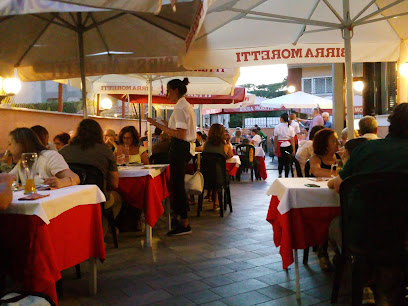
Taverna 58
Discover authentic Abruzzese cuisine at Taverna 58 in Pescara – where tradition meets taste in every dish.
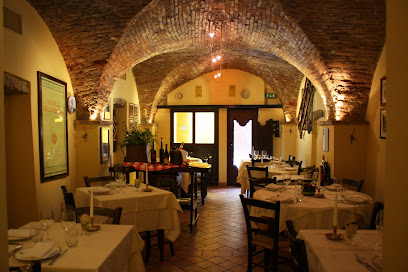
La Locanda sul Lago
Discover authentic Italian flavors at La Locanda sul Lago, where culinary excellence meets breathtaking scenery in Abruzzo.
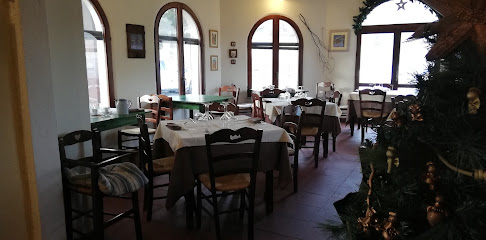
Casetta nel Parco
Discover the authentic flavors of Abruzzo at Casetta nel Parco in L'Aquila – where every dish tells a story.
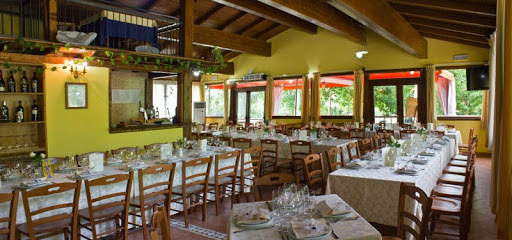
La Grotta dei Raselli
Experience authentic Italian flavors at La Grotta dei Raselli, where traditional cuisine meets warm hospitality in beautiful Guardiagrele.
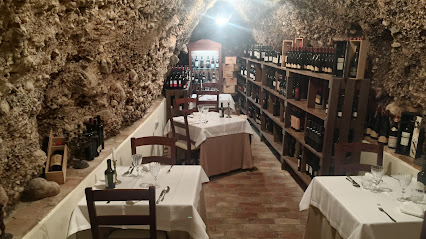
Borgo Spoltino
Experience authentic Southern Italian cuisine at Borgo Spoltino in Abruzzo; where tradition meets flavor amidst stunning landscapes.
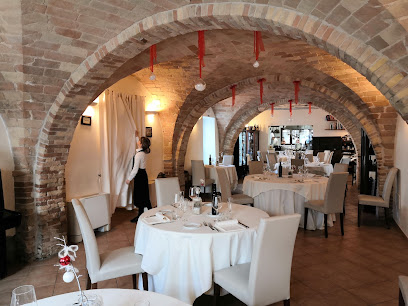
Locanda Madonna delle Vigne
Experience authentic Italian cuisine at Locanda Madonna delle Vigne in Celano, where tradition meets flavor in every dish.
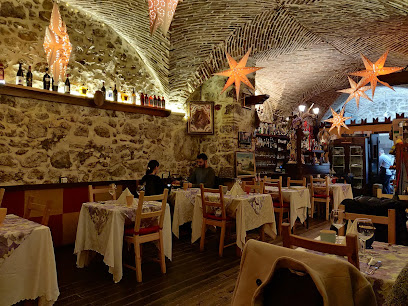
Ristoro Giuliani
Discover Ristoro Giuliani: A must-visit restaurant in Abruzzo serving authentic Arrosticini amidst stunning natural scenery.
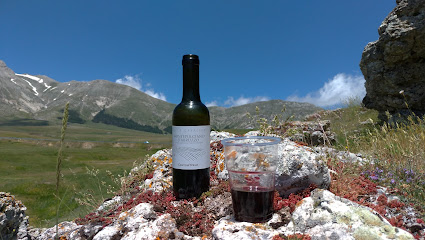
Trattoria L'Angolo d'Abruzzo
Experience authentic Abruzzese cuisine at Trattoria L'Angolo d'Abruzzo in Pescara - where tradition meets flavor.

Ristorante Il Parco Dei Poeti
Discover the elegance and flavor at Ristorante Il Parco Dei Poeti – your ideal venue for unforgettable events and exquisite Italian cuisine.
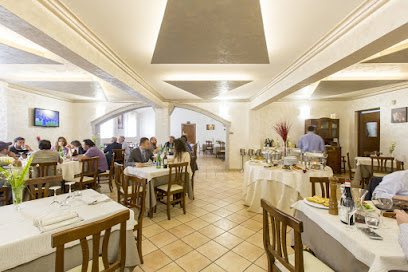
La Bandiera B&B
Experience authentic Italian cuisine at La Bandiera B&B in Civitella Casanova, where local flavors meet warm hospitality.
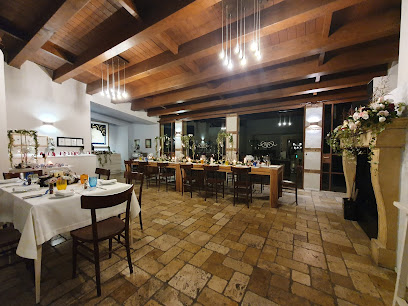
La Tana degli Orsi
Discover La Tana degli Orsi: A family-run Italian restaurant in Teramo offering authentic cuisine amidst stunning landscapes.
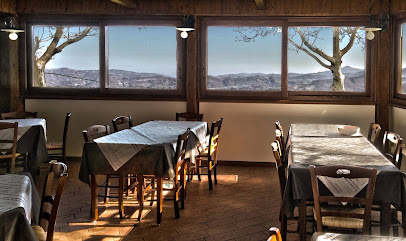
Markets, malls and hidden boutiques
National Park of Abruzzo
Experience the breathtaking beauty of the National Park of Abruzzo – a paradise of mountains, wildlife, and outdoor adventures in Italy.
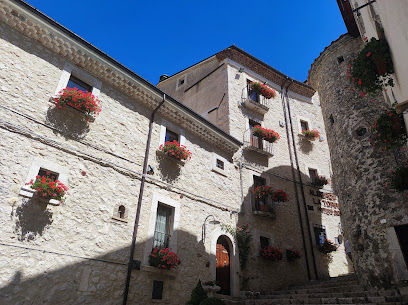
Supermercato Santercole
Discover the flavors of Pescasseroli at Supermercato Santercole, your local grocery store for fresh produce and authentic Italian ingredients.
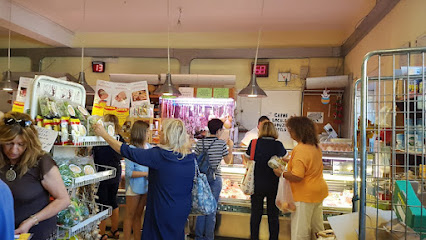
La Casciara
Discover the authentic flavors of Italy at La Casciara in Pescasseroli, where artisanal cheese and gourmet products await your taste buds.
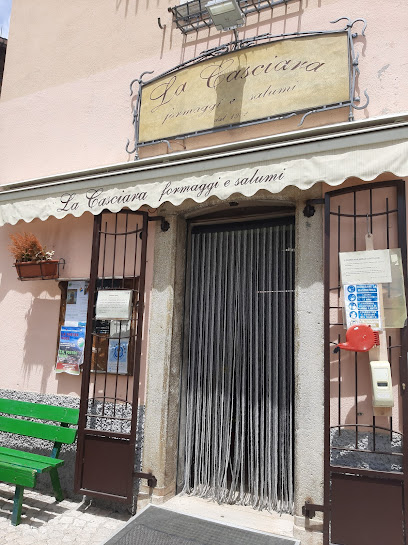
Shine Laboratorio artigianale
Explore Shine Laboratorio in Pescasseroli for unique handcrafted treasures that embody local artistry and culture, perfect for souvenirs and gifts.
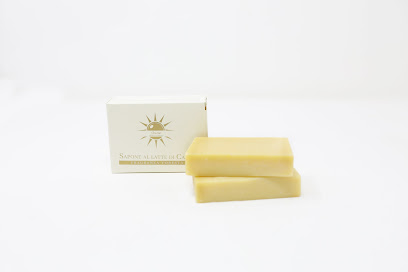
Punto Internet
Experience seamless connectivity and expert tech support at Punto Internet in Pescasseroli, your go-to destination for all computer needs.

FRANCO SPORT
Explore the best outdoor gear and clothing at Franco Sport in Pescasseroli for your Italian adventure in the Apennines.
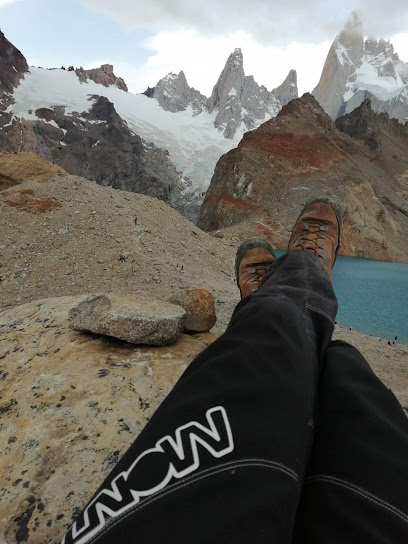
I Frutti dell'Alveare
Experience the flavors of Abruzzo at I Frutti dell'Alveare, where organic delights and local honey await in a stunning natural setting.
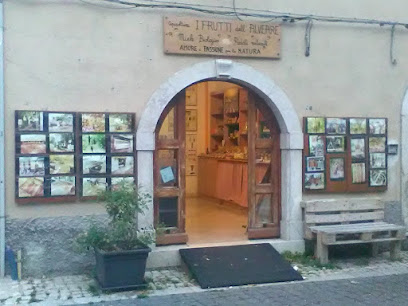
A Q'RIUL
Explore A Q'RIUL in Pescasseroli for exquisite Italian leather goods, crafted with passion and tradition, perfect for unique souvenirs.
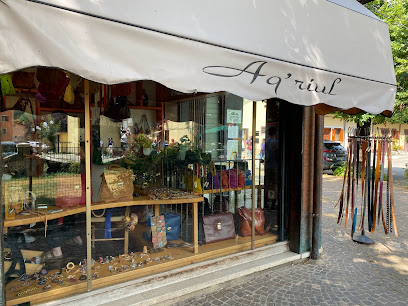
Libreria Boccia
Explore Libreria Boccia in Pescasseroli for unique stationery, local crafts, and creative inspiration in a charming Italian setting.
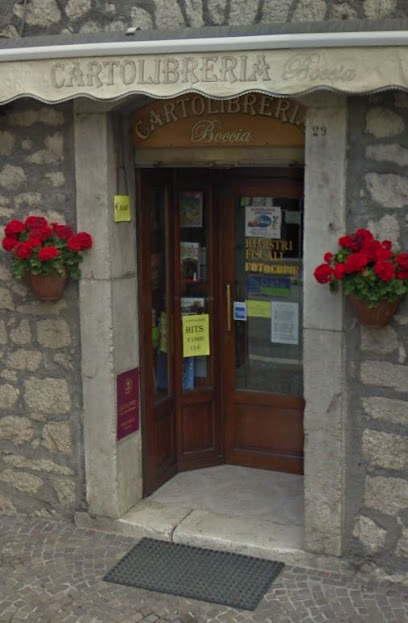
La pulce
Explore the charming La Pulce vintage clothing store and flea market in Pescasseroli, where unique fashion finds and local treasures await.
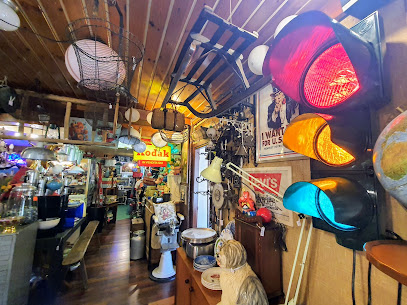
RRTrek Outdoor
Explore Pescasseroli in style with RRTrek Outdoor's high-quality clothing and gear for every adventure.
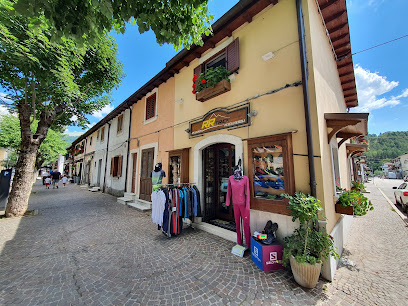
Parco1923 - Flagship Store
Explore Parco1923 in Pescasseroli for exquisite perfumes that embody the spirit of nature, perfect for memorable gifts and personal treasures.
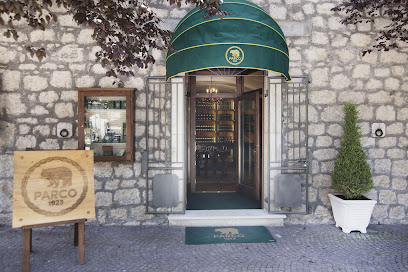
Impronte
Explore Impronte in Pescasseroli for all your pet supply needs, from food to toys, ensuring your furry friends are happy and healthy.
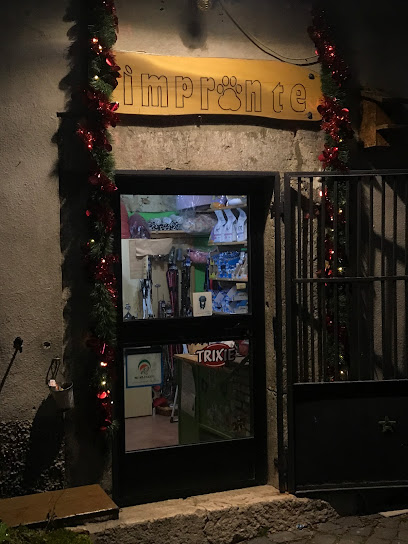
La Vcata
Explore La Vcata in Pescasseroli for unique artisan home goods that reflect Italy's rich craftsmanship and culture.
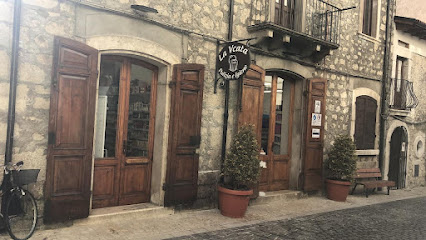
Il Bosco Incantato di Gentile Irma
Discover unique gifts and local treasures at Il Bosco Incantato di Gentile Irma, Pescasseroli's enchanting gift shop in the heart of the Abruzzo region.
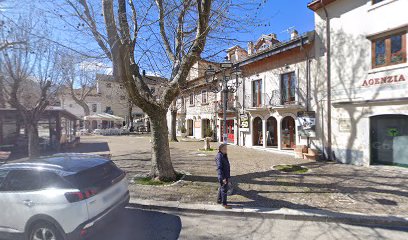
Essential bars & hidden hideouts
Ristorante “IL PICCHIO”
Experience authentic Italian cuisine in the heart of Pescasseroli at Ristorante 'IL PICCHIO', where every meal is a culinary adventure.
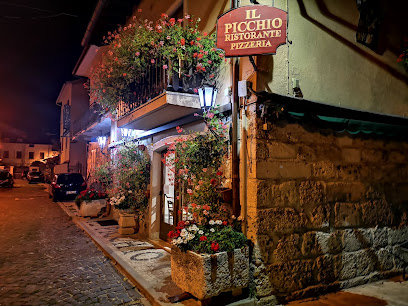
Da Giuseppe
Experience authentic Italian cuisine at Da Giuseppe in Pescasseroli, where every meal is a delightful journey through Italy's culinary landscape.
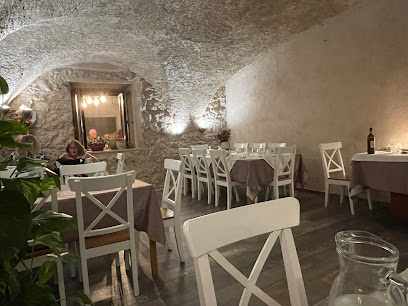
Ristorante Peppe Di Sora
Experience authentic Italian cuisine at Ristorante Peppe Di Sora in Pescasseroli, where tradition meets taste in every dish.
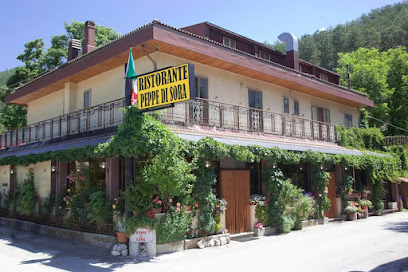
La Tana Del Lupo Ristorante Pizzeria
Experience authentic Italian cuisine at La Tana Del Lupo Ristorante Pizzeria in Pescasseroli, where delicious pizzas and traditional dishes await.

Il Vecchio Mulino Camping Ristorante Bar Opi
Savor authentic Italian cuisine amidst the serene landscapes of Opi at Il Vecchio Mulino Camping Ristorante Bar.

A Cavu't
Experience authentic Italian cuisine at A Cavu't, nestled in the scenic Piazza Vittorio Veneto, Pescasseroli. A must-visit for food enthusiasts!
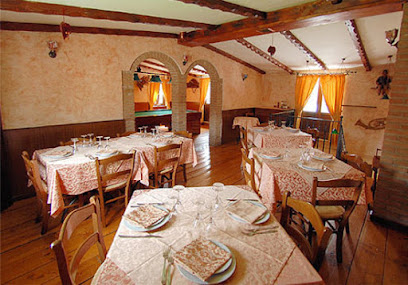
Ristorante Luci
Experience the essence of Southern Italy at Ristorante Luci in Pescasseroli, where every dish is a celebration of flavors and hospitality.
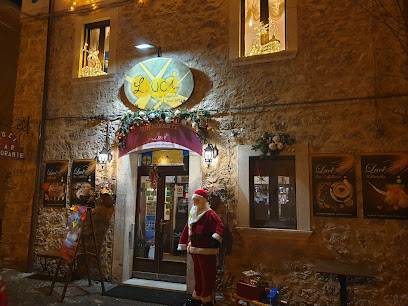
RomCaffe Lago
Experience the charm of RomCaffe Lago, a picturesque bar with stunning lake views and a warm atmosphere in the heart of Villalago.
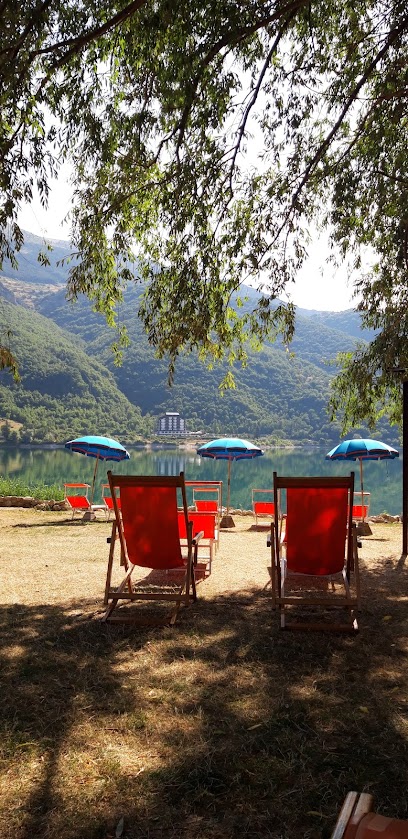
Bar Dell'Orso Di Tarquinio Gaetano
Discover the heart of Pescasseroli at Bar Dell'Orso, where authentic Italian flavors meet a cozy atmosphere in the stunning Abruzzo region.

Ninkasi Pub&Cucina
Discover the culinary delights of Ninkasi Pub&Cucina in Pescasseroli, where traditional flavors meet a vibrant pub atmosphere.
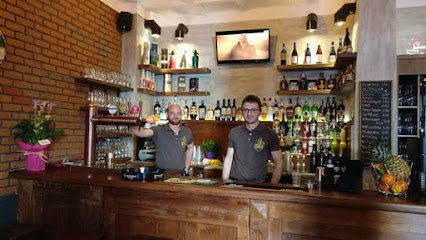
Il Duca degli Abruzzi
Experience the essence of Italian cuisine at Il Duca degli Abruzzi in Pescasseroli, where tradition meets culinary excellence in a charming setting.
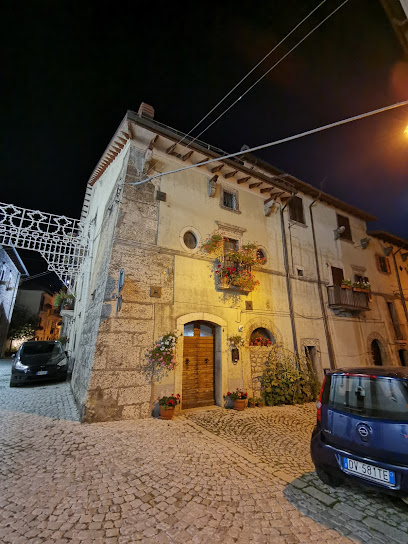
Trattoria Paninoteca da Armando
Savor the authentic taste of Italy at Trattoria Paninoteca da Armando, a charming restaurant in the heart of Pescasseroli, perfect for every food lover.
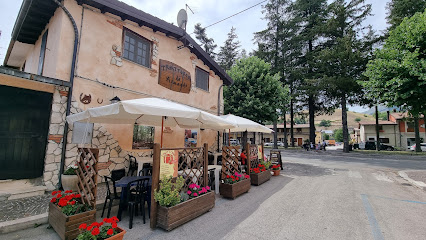
Ristorante alle vecchie arcate
Experience authentic Italian cuisine at Ristorante alle vecchie arcate in Pescasseroli, a must-visit for food lovers seeking traditional flavors.
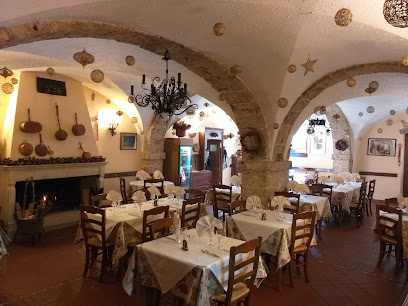
Enoteca Da Barcone
Discover the essence of Italian wine culture at Enoteca Da Barcone in Pescasseroli, where exquisite wines meet delightful local cuisine.
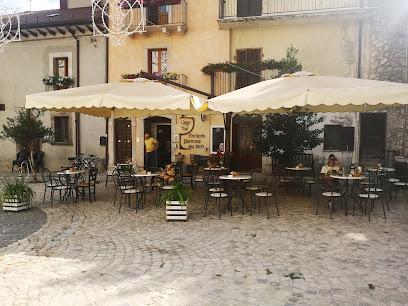
Bar Jurico Pizzeria
Discover the flavors of Italy at Bar Jurico Pizzeria in Pescasseroli, where delicious pizzas and a vibrant atmosphere await you.
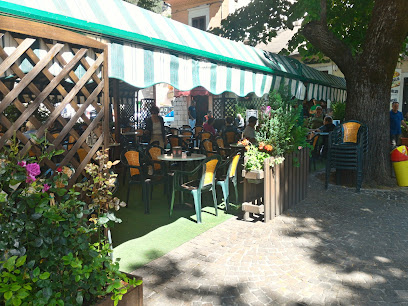
Local Phrases about Abruzzo National Park
-
- HelloSalve
[Sal-veh] - GoodbyeArrivederci
[Ah-ree-veh-dehr-chee] - YesSi
[See] - NoNo
[No] - Please/You're welcomePer favore/Prego
[Pair fah-voh-reh/Preh-goh] - Thank youGrazie
[Graht-zee-eh] - Excuse me/SorryMi scusi/Scusa
[Mee skoo-zee/Skoo-zah] - How are you?Come stai?
[Koh-meh stah-ee] - Fine. And you?Bene. E tu?
[Beh-neh. Eh too] - Do you speak English?Parli inglese?
[Pahr-lee een-gleh-zeh] - I don't understandNon capisco
[Non kah-pee-skoh]
- HelloSalve
-
- I'd like to see the menu, pleaseVorrei vedere il menu, per favore
[Vohr-ray veh-deh-reh eel meh-noo, pair fah-voh-reh] - I don't eat meatNon mangio carne
[Non mahn-joh kahr-neh] - Cheers!Salute!
[Sah-loo-teh] - I would like to pay, pleaseVorrei pagare, per favore
[Vohr-ray pah-gah-reh, pair fah-voh-reh]
- I'd like to see the menu, pleaseVorrei vedere il menu, per favore
-
- Help!Aiuto!
[Ah-yoo-toh] - Go away!Vattene!
[Vah-tay-neh] - Call the Police!Chiama la Polizia!
[Kee-ah-mah lah Poh-lee-tsya] - Call a doctor!Chiama un dottore!
[Kee-ah-mah oon doh-toh-reh] - I'm lostMi sono perso/a
[Mee soh-noh pehr-soh/ah] - I'm illSto male
[Stoh mah-leh]
- Help!Aiuto!
-
- I'd like to buy...Vorrei comprare...
[Vohr-ray kohm-prah-reh] - I'm just lookingSto solo guardando
[Stoh soh-loh gwar-dahn-doh] - How much is it?Quanto costa?
[Kwan-toh koh-stah] - That's too expensiveÈ troppo caro
[Eh troh-poh kah-roh] - Can you lower the price?Puoi abbassare il prezzo?
[Pwoy ahb-bah-sah-reh eel preh-tsoh]
- I'd like to buy...Vorrei comprare...
-
- What time is it?Che ora è?
[Keh oh-rah eh] - It's one o'clockÈ l'una
[Eh loo-nah] - Half past (10)Sono le dieci e mezza
[Soh-noh leh dee-eh-chee eh meh-tzah] - MorningMattina
[Maht-tee-nah] - AfternoonPomeriggio
[Poh-meh-ree-joh] - EveningSera
[Seh-rah] - YesterdayIeri
[Yeh-ree] - TodayOggi
[Oh-jee] - TomorrowDomani
[Doh-mah-nee] - 1Uno
[Oo-noh] - 2Due
[Doo-eh] - 3Tre
[Treh] - 4Quattro
[Kwaht-troh] - 5Cinque
[Cheen-kweh] - 6Sei
[Say] - 7Sette
[Set-teh] - 8Otto
[Oht-toh] - 9Nove
[Noh-veh] - 10Dieci
[Dee-eh-chee]
- What time is it?Che ora è?
-
- Where's a/the...?Dov'è un/il...?
[Doh-veh oon/eel] - What's the address?Qual è l'indirizzo?
[Kwahl eh leen-dee-reet-soh] - Can you show me (on the map)?Puoi mostrarmi (sulla mappa)?
[Pwoy mohs-trahr-mee (soo-lah mahp-pah)] - When's the next (bus)?Quando è il prossimo (autobus)?
[Kwan-doh eh eel prohs-see-moh (ow-toh-boos)] - A ticket (to ....)Un biglietto (per ....)
[Oon beel-yet-toh (pair)]
- Where's a/the...?Dov'è un/il...?
History of Abruzzo National Park
-
The area now known as Abruzzo National Park was once home to the ancient Samnite tribes. The Samnites, a fierce and independent Italic tribe, settled in the region around the 7th century BCE. They were renowned for their warrior culture and frequent conflicts with the expanding Roman Republic. Evidence of their presence can be found in the ruins and archaeological sites scattered throughout the park, such as remnants of ancient fortifications and necropolises.
-
By the 3rd century BCE, the Romans had successfully subdued the Samnites and incorporated their territory into the Roman Republic. The Romans left a lasting mark on the landscape, constructing roads, aqueducts, and settlements. One notable site within the park is the remnants of the ancient Roman town of Alba Fucens, situated on a hilltop with commanding views of the surrounding area. The town was strategically important and featured an amphitheater, temples, and baths.
-
During the medieval period, the region saw the construction of numerous fortresses and castles, which were used to defend against invasions by various groups, including the Lombards and Saracens. The park's rugged terrain provided natural defense, and many of these structures are still visible today, such as the imposing Rocca Calascio, one of the highest fortresses in Italy. Additionally, the area became a center for monastic life, with several monasteries and hermitages established by Benedictine monks, who played a crucial role in preserving knowledge and culture during the Dark Ages.
-
The Renaissance and Baroque periods brought cultural and architectural enrichment to the Abruzzo region. Many towns and villages within the park saw the construction of elegant palazzi, churches, and public buildings adorned with art and frescoes. The town of Pescasseroli, now a central hub of the national park, has several well-preserved buildings from this era, showcasing the intricate craftsmanship and artistic expression of the time.
-
During World War II, the rugged mountains and dense forests of Abruzzo National Park provided a refuge for Italian partisans fighting against German occupation and Fascist forces. The park's challenging terrain offered natural cover and strategic advantages for guerrilla warfare. Several memorials and plaques throughout the park commemorate the bravery and sacrifices of the resistance fighters who played a significant role in the eventual liberation of Italy.
-
Abruzzo National Park was officially established in 1922, making it one of the oldest national parks in Italy. The park was created to protect the unique biodiversity, landscapes, and cultural heritage of the region. It encompasses over 50,000 hectares of pristine wilderness, including ancient beech forests, alpine meadows, and diverse wildlife, such as the Marsican brown bear and the Abruzzo chamois. The park's creation marked a significant step in the conservation movement in Italy and remains a model for sustainable tourism and environmental protection.
Abruzzo National Park Essentials
-
Abruzzo National Park is situated in the heart of the Apennine Mountains in central Italy. The nearest international airports are Rome Fiumicino (Leonardo da Vinci) and Rome Ciampino. From Rome, you can take a direct bus or train to Pescasseroli, one of the main towns in the park. The journey typically takes around 2 to 3 hours by bus and 3 to 4 hours by train. Alternatively, renting a car can provide more flexibility and allow you to explore the park at your own pace.
-
Within Abruzzo National Park, the best way to get around is by car, as it gives you the freedom to explore remote areas and scenic routes. Car rentals are available in nearby cities like Rome and Pescara. Public transportation options include local buses and shuttles that connect major towns and visitor centers within the park. For a more immersive experience, consider hiking or biking, as there are numerous well-marked trails.
-
The official currency in Italy is the Euro (EUR). Credit and debit cards are widely accepted in most hotels, restaurants, and shops around Abruzzo National Park. However, it is advisable to carry some cash, especially when visiting smaller villages or remote areas where card payment might not be available. ATMs can be found in larger towns within the park, such as Pescasseroli and Civitella Alfedena.
-
Abruzzo National Park is generally a safe destination for tourists. However, it is always wise to take standard precautions. Avoid leaving valuables in plain sight in your car and be cautious when hiking in remote areas. There are no specific high-crime areas targeting tourists, but it is always best to stay vigilant and aware of your surroundings. In case of any issues, local police and park rangers are available to assist.
-
In case of an emergency, dial 112 for immediate assistance. The park has several visitor centers where you can get help or information regarding medical facilities. It is advisable to have travel insurance that covers medical emergencies. For minor health issues, there are pharmacies in the larger towns within the park where you can purchase over-the-counter medications.
-
Fashion: Do wear comfortable, weather-appropriate clothing and sturdy hiking boots. Avoid wearing flashy or overly casual clothing. Religion: Do respect local religious sites and traditions. Cover your shoulders and legs when visiting churches. Public Transport: Do be respectful and offer your seat to elderly passengers. Don't eat or drink on public transport. Greetings: Do greet people with a polite 'Buongiorno' (Good morning) or 'Buonasera' (Good evening). A handshake is a common form of greeting. Eating & Drinking: Do try local dishes and wines. Don't rush through meals; Italians appreciate leisurely dining.
-
To experience Abruzzo National Park like a local, take time to visit the local markets and try regional specialties like arrosticini (skewers of grilled meat) and pecorino cheese. Engage with locals, as they are often friendly and eager to share their knowledge of the park's history and culture. Participate in local festivals and events to get a deeper understanding of the area's traditions. Don't miss the opportunity to explore lesser-known trails and hidden gems within the park for a more authentic experience.
Trending Landmarks in Abruzzo National Park
-
Parco Nazionale del Gran Sasso e Monti della Laga
-
National Park of Abruzzo
-
Rocca Calascio
-
Riserva naturale guidata Punta Aderci
-
Stiffe Caves
-
The Natural Reserve Camosciara
-
Valle dell'Orfento
-
Nature Reserve Pineta Dannunziana
-
Visitor Center Daini
-
Parco Naturale Majella
-
Parco Nazionale della Maiella
-
National Museum of Abruzzo - MUNDA
-
Ente Parco Nazionale del Gran Sasso and Monti Della Laga
-
Ente Autonomo Parco Nazionale D'Abruzzo
Nearby Cities to Abruzzo National Park
-
Things To Do in St. Peter's Square
-
Things To Do in Apostolic Palace
-
Things To Do in Sistine Chapel
-
Things To Do in Vatican Necropolis
-
Things To Do in St. Peter's Basilica
-
Things To Do in Gregorian Etruscan Museum
-
Things To Do in Vatican Museums
-
Things To Do in Vatican Pinacoteca
-
Things To Do in Vatican Gardens
-
Things To Do in Naples
-
Things To Do in Herculaneum
-
Things To Do in Pompeii
-
Things To Do in Sorrento
-
Things To Do in Positano
-
Things To Do in Capri












